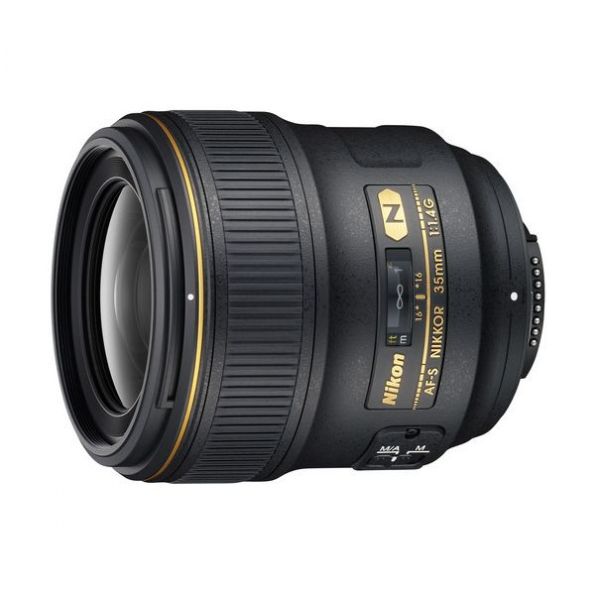Mounted on the sub-frame D300s, the 35mm ƒ/1.4G produced soft results wide open at ƒ/1.4. Slightly sharper performance was obtained by stopping down to ƒ/2, showing decent sharpness in the center and tapering off to light softness in the corners. It isn't until ƒ/2.8 that we start seeing very sharp results throughout the frame, with only very light softness in the corners; stopping down further provides only marginal improvements, as maximal sharpness is obtained at ƒ/4 and onwards. Diffraction limiting begins to appear on the D300s at ƒ/8, but it isn't until the lens is fully stopped-down at ƒ/16 that there's any practical impact on sharpness, where it still produces sharper results than when used wide open at ƒ/1.4.
Results were similar when the lens was mounted on the full-frame D3x, with some interesting twists. At ƒ/1.4 the lens is still fairly soft across the frame, but with more pronounced softness in the corners. Stopped down to ƒ/2, there's a slight improvement in central sharpness - the pocket of sharpness in the center improves - but this is at the expense of corner softness, which also increases slightly.
Continuing to stop down this lens on the D3x improves performance, as excellent results begin to appear from ƒ/2.8 onwards. However it's interesting to note at ƒ/2.8 and ƒ/4 that both the central region and the extreme corners are sharp, but there is light softness in the areas inbetween. It probably isn't enough to get too worried about, but for images where edge-to-edge sharpness is paramount, you'll want to stop down to ƒ/5.6, the sharpest aperture for this lens, where the effect is minimal.
Diffraction limiting seems to set in at ƒ/8, but again, there's no real impact on performance until the smallest aperture setting of ƒ/16, where (similarly to DX performance) the edge-to-edge sharpness is better than noted at ƒ/1.4.











































